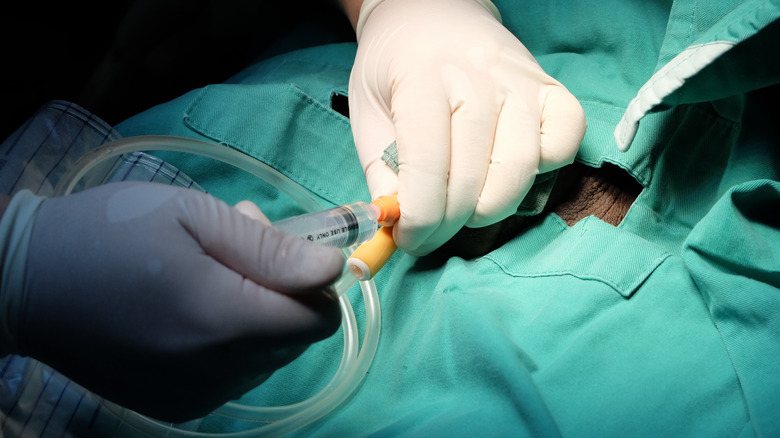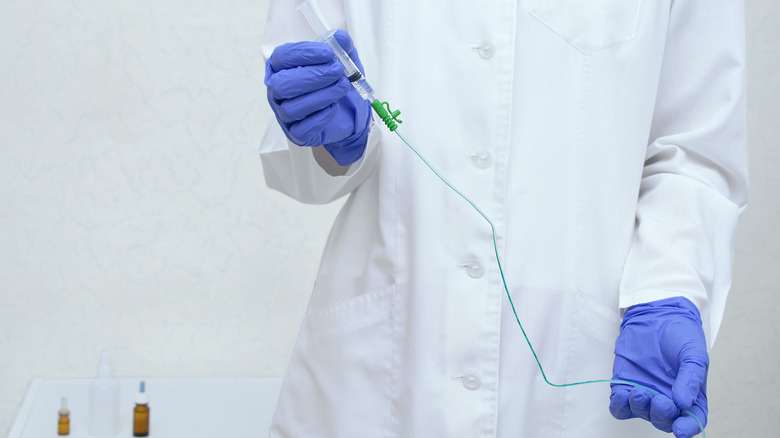Understanding The Different Types Of Urinary Catheters
A urinary catheter is a thin tube that is inserted into the bladder to drain urine (via Medline Plus). It is commonly used in hospitals and other healthcare settings but can also be used at home. There are several reasons why someone might need a urinary catheter. For example, they may be used during surgery to allow the bladder to empty, according to the National Health Services (NHS). They may also be used to diagnose and treat certain urinary tract conditions, such as bladder or kidney stones (via Healthline). In some cases, urinary catheters may be used to measure how much urine the body is producing, says James Duke, author of Anesthesia Secrets. This can be important for people who have kidney disease or other conditions that affect kidney function.
Suppose you are considering the use of a urinary catheter or have been advised to use one. In that case, it is important to talk to your healthcare provider about the potential risks and benefits. You should be sure to follow their instructions for care and use. It's also a good idea to discuss which option is best, since various types of urinary catheters exist.
What are the different types of urinary catheters?
There are several different types of urinary catheters, each with its specific features and indications for use. According to the National Health Services (NHS), common types include intermittent, indwelling, and suprapubic catheters. Intermittent catheters are used to periodically drain the bladder and are typically inserted and removed by a healthcare provider. They may be used for people who are unable to empty their bladder on their own or who have a condition that requires frequent drainage (per WebMD).
Indwelling catheters, on the other hand, are left in the bladder for an extended period, often for several days to weeks. According to the NHS, they are typically held in place by a small balloon. They are usually connected to a drainage bag, which is worn outside the body (usually strapped to the leg) and collects urine as it drains from the bladder.
Suprapubic catheters are inserted through a small incision in the abdomen and into the bladder, a procedure that is done while the patient is under general anesthesia. These catheters may be used for people who have a condition that makes it difficult to insert a catheter through the urethra. Suprapubic catheters are typically secured on the body.
In general, the choice of catheter will depend on the patient's specific needs and the healthcare provider's preference.
How to care for a urinary catheter
It is important to follow the instructions of your healthcare provider and to properly care for the catheter to minimize the risk of infections and other complications. Healthline advises keeping the area around the catheter (both the skin and the catheter itself) clean. According to the source, you can do this by gently washing the area with soap and water. If you are using a drainage bag, it is important to empty it regularly to prevent it from getting too full. Healthline advises emptying it every 8 hours.
If you are using a self-care catheter, it is important to follow the instructions provided by the manufacturer. Be sure to wash your hands before and after inserting the catheter, and be sure to also follow the instructions for care and disposal.
Suppose you experience any problems with your catheter, such as difficulty urinating, a change in the amount of urine being produced, or pain or discomfort. In that case, it is important to contact your healthcare provider as soon as possible. They will be able to assess the situation and provide appropriate treatment as needed.



